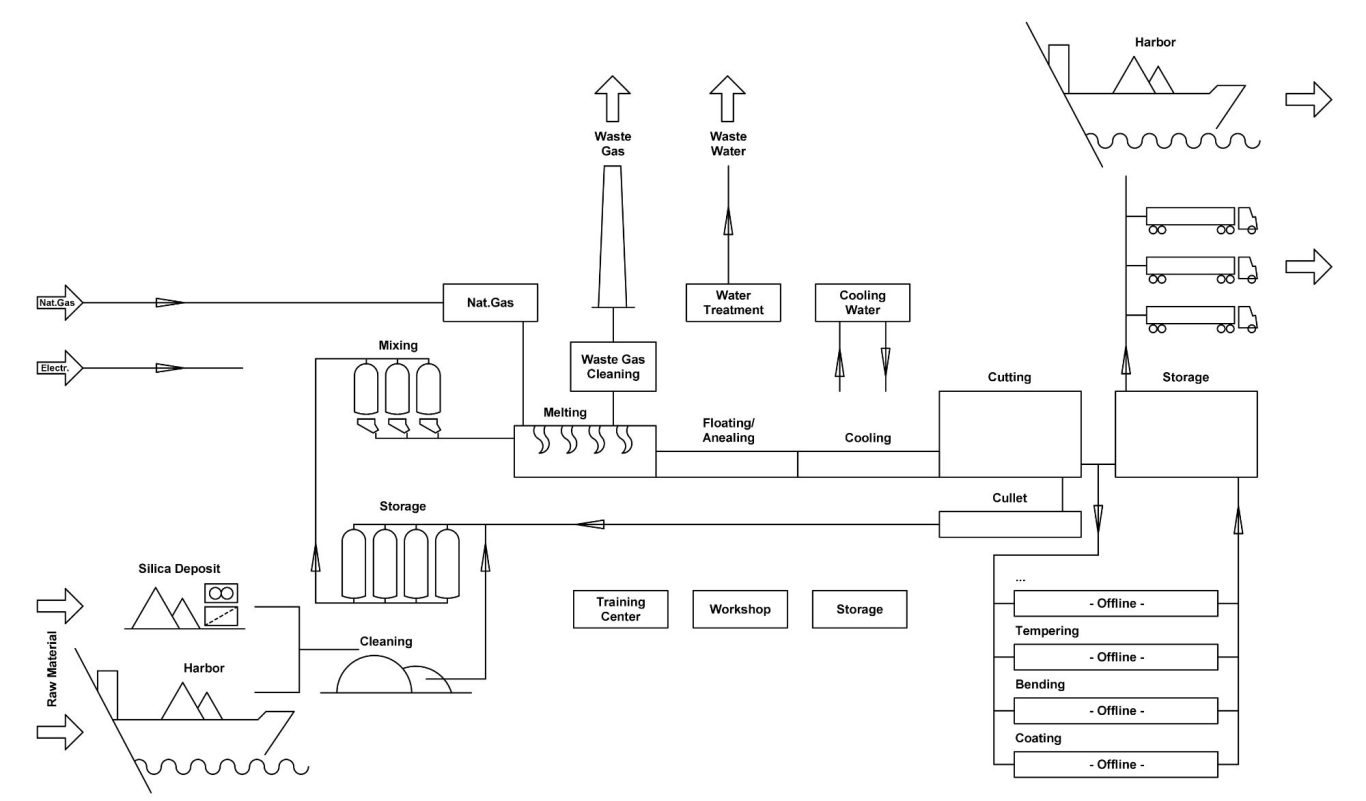Flat Glass
The Float Glass Process, invented by Sir Alastair Pilkington in 1952, manufactures clear, tinted and coated glass for buildings, and clear and tinted glass for vehicles. The process, originally able to make only 6mm thick glass, now makes it as thin as
0.4 mm and as thick as 25 mm.
• A float plant, which operates non-stop for between
10-15 years, makes around 6,000 kilometers of glass a year
in thicknesses of 0.4 mm to 25 mm and in widths
up to 3.5 meters. The float process has been licensed to
more than 40 manufacturers in 30 countries.
Around 370 float lines are in operation, under construction
or planned worldwide with a combined output of
about 970,000 tons of glass a week.
• According to the US Glass News Network, global glass
prices will increase between 15 to 40% starting as of
June 27, 2022 due to combination of material cost increases,
supply chain disruptions along with other negative economic
influences.
Due to current market situation as well as due to the current international political development, LUMA-i intends to build an own flat glass production unit within the area of north Africa. The intention is to produce Flat Glass for building industry in several formats and types, including tempered and bulletproof and ballistic glass.

Glass in Buildings
The influence of light on our well-being and our performance was underestimated for a long time in building planning. Open-plan offices or schools were planned with as little connection to the outside world as possible so as not to disturb concentration while working. Today, studies show that people who have little natural light at their workplace complain of numerous health problems after a while.
When light hits the eye and its effect, various glands trigger or control numerous functional mechanisms in the body, such as hormone production or the sleep-wake rhythm.
In addition, a lack of light causes depressive moods due to the increased production of melatonin and the associated biochemical changes in the brain and metabolism.

© Urheberrecht. Alle Rechte vorbehalten.
Wir benötigen Ihre Zustimmung zum Laden der Übersetzungen
Wir nutzen einen Drittanbieter-Service, um den Inhalt der Website zu übersetzen, der möglicherweise Daten über Ihre Aktivitäten sammelt. Bitte überprüfen Sie die Details in der Datenschutzerklärung und akzeptieren Sie den Dienst, um die Übersetzungen zu sehen.
